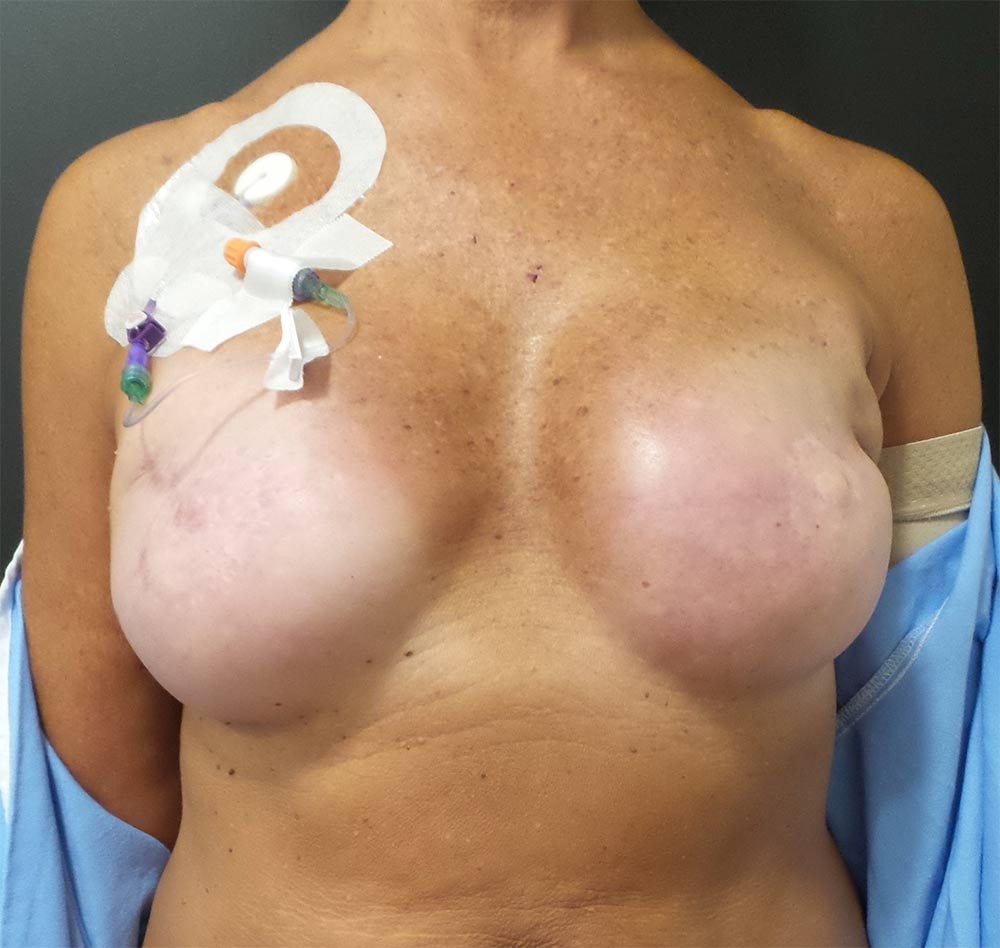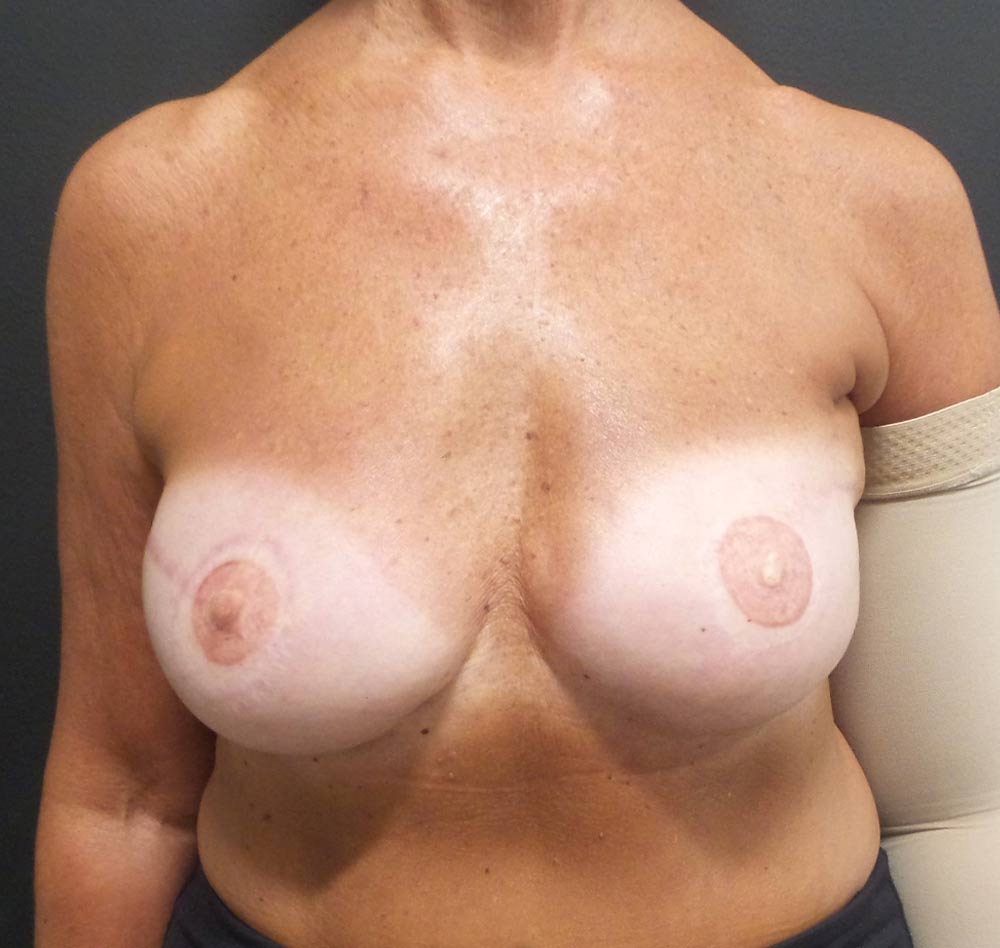Breast implant infection is an uncommon but serious condition that can occur after breast augmentation or breast reconstruction surgery. While the risk of infection is low, it is important for patients to be aware of the signs and symptoms and seek prompt treatment if they suspect an infection. On this page, we will be reviewing options after infection in breast reconstruction cases only.
At Jandali Plastic Surgery in Connecticut, our experienced team takes a comprehensive approach to treating breast implant infections. If you currently have an infection, our goal is to effectively treat the infection and preserve the tissue expander or implant. This is usually successful with antibiotics and potential surgery. However, in cases where it is not successful, the tissue expander or implant needs to be removed for the infection to clear.
The first step in treating a breast implant infection is to identify the cause of the infection if possible. This may involve taking a sample of any fluid around the infected tissue expander or implant, and then sending it for culture. Antibiotics are tailored based on the results of the culture and what bacteria are present.
Treatment Options for Breast Implant Infections
In some cases, the infection may be treated with antibiotics. However, if the infection is more severe or has spread around the implant, it may be necessary to remove the implant and allow the infection to clear before replacing it. Dr. Jandali will work with each patient to develop an individualized treatment plan that takes into account their specific needs and goals.
The treatment options for a breast implant infection can vary depending on the severity and cause of the infection. Here are some common treatment options:
- Antibiotics: If the infection is mild and in the superficial skin, it likely has not spread to the implant and antibiotics may completely clear the infection. Oral or intravenous antibiotics may be used, depending on the severity of the infection. Our team uses a special type of IV antibiotic infusion which avoids insertion of a PICC line or staying in the hospital for IV antibiotics.
- Drainage and washout: If the infection has caused an accumulation of pus around the tissue expander or implant, surgery may be necessary to wash out all the fluid and send it for culture. Sometimes a drain is inserted and a new tissue expander or implant can be inserted.
- Tissue expander or Implant removal: In some cases, the tissue expander or implant may need to be removed after washing the pocket out in order to allow the infection to clear. This may be necessary if the infection is severe and there is a significant amount of swelling of the tissues. After the infection has cleared for 2-3 months, the swelling has resolved, and the tissues are soft again, a new tissue expander or implant can be replaced if desired. Many women will choose to avoid an implant after a previous infection, and they desire natural breast reconstruction using their own tissue with a surgery like a DIEP flap.
It is important to note that breast tissue expander or implant infections can take several weeks to resolve, and patients may need to undergo more than one surgical procedure to fully treat the infection. During this time, Dr. Jandali will provide ongoing care and support to help ensure a smooth and successful recovery.
DIEP Flaps after Infected Breast Tissue Expanders or Implants
Undergoing breast cancer treatment is a stressful time in any woman’s life. When complicated by infection, this can be quite frustrating to patients. Many women don’t want to put a new tissue expander or implant in, for fear of rejection and another infection. Further, some women need to undergo further treatment, like radiation therapy, which makes it much more difficult to place another tissue expander or implant after the infection is cleared.
Many women opt for DIEP flap breast reconstruction after tissue expander or implant loss due to infection. DIEP flaps use a patient’s own tissue from the lower abdomen to recreate one or both breasts. This avoids the need for any implant and therefore has almost a zero risk of infection.


Frequently Asked Questions
What are the signs of a breast implant infection?
Symptoms may include swelling, redness, tenderness, fever, or unusual discharge around the surgical site. If you observe these symptoms, contact your doctor immediately.
What causes breast implant infections?
Most breast implant infections occur due to bacteria introduced during or shortly after surgery. However, they can occur at any time if bacteria reach the implant through the bloodstream.
What is the typical treatment for breast implant infection?
Treatment usually begins with antibiotics to fight the infection. If the infection does not resolve, the implant might need to be removed temporarily until the infection is cleared.
What happens if my implant is removed due to infection?
If an implant is removed, it is usually reinserted after the infection has cleared and the tissue is healed, typically after 2-3 months. The specific timeline will be determined by Dr. Jandali based on your personal circumstances.
Care for Infected Tissue Expanders or Implants at our Connecticut Office
At Jandali Plastic Surgery, we understand that a breast implant infection can be a stressful and concerning experience for our patients. That’s why we work closely with each patient to provide the care and support they need to get through this difficult time. Dr. Jandali is dedicated to providing the highest quality care and ensuring the best possible outcomes for our patients.

